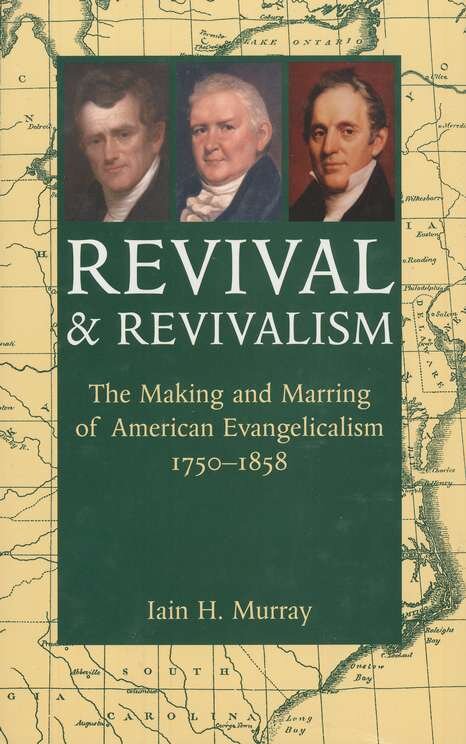Iain Murray, Revival and Revivalism: The Making and Marring of American Evangelicalism, 1750-1858. Banner of Truth, 1994.
Referenced in: Congregational Renewal through Spiritual Revival
LifeandLeadership.com Summary
In the broader work of congregational renewal, spiritual revival certainly has its place. As indicated in the Resource Guide on this subject, not all those interested in church renewal will wish or need to see their situation through the eyes of revival. Revivals are unique and unusual occurrences, and it is impossible to deny the importance of revival in scripture and Christian history. One important task in appropriating God’s work in revival, however, is to distinguish between true and counterfeit phenomena, and to understand how revival has manifested itself in Christian history.
Iain Murray’s volume is a long-recognized standard on revivalism from a conservative Reformed (Calvinist) perspective. In a tone characteristic of the Banner of Truth Trust (which Murray founded in 1957 and ran until 1987) it is a very hard-hitting critique of American evangelicalism of the twentieth century, reaching back to describe the lingering bane and blessing of historical figures such as Charles G. Finney.
The key distinction is between Revival and Revivalism. Genuine Revival results when the Holy Spirit intervenes powerfully in human history to bring large-scale reform that cannot possibly be attributed to human engineering. This is in contrast to Revivalism, which is a form of human activism, where those wanting “revival” may actually put forth energy and organization that may be neither initiated nor guided by the Holy Spirit. Murray argues the Second Great Awakening in America blurred this distinction in the early nineteenth century, primarily through the influence of the Wesleys and Charles G. Finney. The negative effects still remain, as evidenced by the continued use of protracted mass meetings, emotional appeals, making decisions for Christ, and using the “altar call” or “invitation” to bring people forward. Those who practiced this touted the number of conversions as proof of legitimacy. Since this swept the landscape so powerfully, and was adopted by Baptists and other groups as the preferred method, it came to be synonymous with genuine revival to the extent that it eclipsed all other understandings of revival. This is the “marring” of American evangelicalism. He harkens back, however to the late 19th century revivals, primarily among Presbyterians and Baptists, which he regards to be authentic.
One may not always agree with Murray’s Calvinistic contention that genuine conversion cannot be persuaded but is a result only of a sovereign operation of divine grace. Beyond this, however, he offers an interesting perspective on modern practices of revival.
From the Publisher
Marrying careful historical research to popular and relevant presentation, Revival & Revivalism traces the spiritually epoch-making events of the eighteenth and nineteenth centuries through the eyes of those who lived at their center.
Fundamental to the book’s thesis is a rejection of the frequent identification of “revival” with “revivalism—. The author demonstrates that a common understanding of the New Testament idea of revival was prevalent in most denominations throughout the period 1750-1858. Revivalism, on the other hand, is different both in its origin and in its tendencies. Its ethos is man-centered and its methods too close to the manipulative to require a supernatural explanation.
About the Author
Iain Murray entered the Christian ministry in 1955 where he served as assistant to Dr. Martyn Lloyd-Jones at Westminster Chapel as well as several other ministry positions. He is a co-founder of Banner of Truth Trust and now is retired and living in Great Britian.
***For additional information on this resource, including reviews, click the bookstore links. Check the reference at page top or the links below for resource guides on related topics.***
Related Areas
See Other Resources on Church Leadership and Renewal:
- Church Leadership and Renewal, Index
- Church Leadership, Theological Foundations, Ecclesiology
- Church Leadership, Philosophical Foundations – e.g. Church Growth, Missional, Emergent, and Other Missionally Responsive Trajectories
- Church Leadership, Practical Foundations – Church Dynamics and Research
- Church Leadership, Practical Foundations – Congregational Culture, Church Identity
- Church Leadership, Practical Foundations – Size Dynamics, Size Transitions
- Church Leadership, Practical Foundations – Research and Case Studies on Effective Churches
- Church Leadership, Special Situations – Small Church Development
- Church Leadership, Strategies for Renewal
See Resources on Over 100 Areas of Ministry Leadership:


